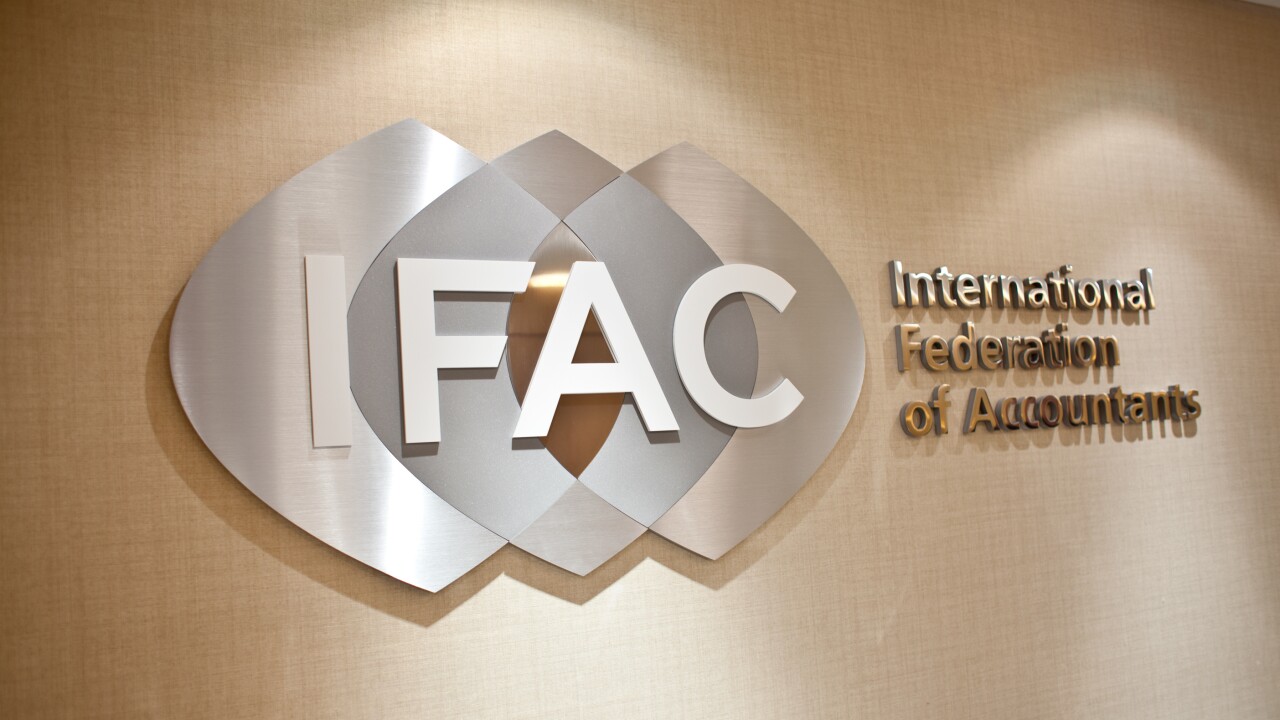The Internal Revenue Service released its annual inflation adjustments Wednesday, including the standard deduction amount for individual and married taxpayers.
The standard deduction for married couples filing jointly for tax year 2022 is increasing to $25,900, up $800 from the previous year. For single taxpayers and married individuals filing separately, the standard deduction is rising to $12,950 for 2022, up $400, and for heads of households, the standard deduction will be $19,400 for tax year 2022, up $600.
The personal exemption for tax year 2022 is staying at 0, as it was for this year. The elimination of the personal exemption was a provision in the Tax Cuts and Jobs Act of 2017. For tax year 2022, the top tax rate remains 37% for individual single taxpayers with incomes greater than $539,900 ($647,850 for married couples filing jointly). The other rates are:
- 35%, for incomes over $215,950 ($431,900 for married couples filing jointly);
- 32% for incomes over $170,050 ($340,100 for MFJ);
- 24% for incomes over $89,075 ($178,150 for MFJ);
- 22% for incomes over $41,775 ($83,550 for MFJ); and
- 12% for incomes over $10,275 ($20,550 for MFJ).
The lowest rate is 10% for incomes of single individuals with incomes of $10,275 or less ($20,550 for married couples filing jointly).
The adjustments come as inflation has reached 6.2% compared to a year ago, the Bureau of Labor Statistics reported Wednesday, the highest level in 30 years, fueled by energy prices and supply chain shortages sparked by the COVID-19 pandemic, with prices rising on food, shelter and automobiles. Last week, the IRS released the annual inflation adjustments for 401(k) plans, individual retirement accounts, Roth IRAs and other retirement-related items (

- For 2022, as in 2021, 2020, 2019 and 2018, there is no limitation on itemized deductions, as that limitation was eliminated by the Tax Cuts and Jobs Act.
- The Alternative Minimum Tax exemption amount for tax year 2022 is $75,900 and begins to phase out at $539,900 ($118,100 for married couples filing jointly, for whom the exemption begins to phase out at $1,079,800). The 2021 exemption amount was $73,600 and began to phase out at $523,600 ($114,600 for married couples filing jointly, for whom the exemption began to phase out at $1,047,200).
- The tax year 2022 maximum Earned Income Tax Credit amount is $6,935 for qualifying taxpayers who have three or more qualifying children, up from $6,728 for tax year 2021. The revenue procedure contains a table providing maximum EITC amount for other categories, income thresholds and phase-outs.
- For tax year 2022, the monthly limitation for the qualified transportation fringe benefit and the monthly limitation for qualified parking increases to $280.
- For the taxable years beginning in 2022, the dollar limitation for employee salary reductions for contributions to health flexible spending arrangements increases to $2,850. For cafeteria plans that permit the carryover of unused amounts, the maximum carryover amount is $570, an increase of $20 from 2021.
- For tax year 2022, participants who have self-only coverage in a medical savings account, the plan must have an annual deductible that is not less than $2,450, up $50 from tax year 2021; but not more than $3,700, an increase of $100 from 2021. For self-only coverage, the maximum out-of-pocket expense amount is $4,950, up $150 from 2021. For tax year 2022, for family coverage, the annual deductible is not less than $4,950, up from $4,800 in 2021; however, the deductible cannot be more than $7,400, up $250 from the limit for 2021. For family coverage, the out-of-pocket expense limit is $9,050 for 2022, an increase of $300 from 2021.
- The modified adjusted gross income amount used by joint filers to determine the reduction in the Lifetime Learning Credit provided in Sec. 25A(d)(2) is not adjusted for inflation for taxable years beginning after Dec. 31, 2020. The Lifetime Learning Credit is phased out for taxpayers with modified AGI in excess of $80,000 ($160,000 for joint returns).
- For tax year 2022, the foreign earned income exclusion is $112,000 up from $108,700 for 2021.
- Estates of decedents who die during 2022 have a basic exclusion amount of $12,060,000, up from a total of $11,700,000 for estates of decedents who died in 2021.
- The annual exclusion for gifts increases to $16,000 for calendar year 2022, up from $15,000 for calendar year 2021.
- The maximum credit allowed for adoptions for tax year 2022 is the amount of qualified adoption expenses up to $14,890, up from $14,440 for 2021.





